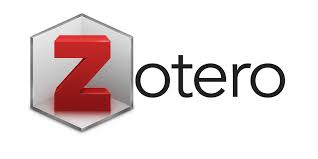Urgensi Pengenalan Konsep Literasi Numerasi pada Anak Usia Dini
DOI:
https://doi.org/10.29240/ja.v4i1.4626Keywords:
Numeracy literacy (quantitative literacy), Early childhood, 21st Century skillAbstract
This study discusses the urgency of introducing the concept of numeracy literacy in early childhood. Numerical literacy is one of the most needed skills in facing the 21st century, especially for the young generation. The question still remains, when should these skills be introduced and trained to the young generation candidates. Should it be introduced and taught from an early age? The purpose of this study was to determine the urgency of introducing the concept of numeracy literacy in early childhood. This study uses a literature review method where the authors collect 7 studies related to numeracy literacy in early childhood. From the results of the review that the author conducted on the seven related articles, there are 3 (three) important reasons why numeracy literacy should be introduced to early childhood. Based on these reasons, the authors conclude that the urgency of introducing the concept of literacy to early childhood is quite high, because numeracy literacy is a basic skill that must be possessed in the 21st century and early childhood is a golden age where the level of intellectual maturity of children is formed up to 80%.
Downloads
References
Cahyana, A. (2020). Prospek AKM dan Survei Karakter: Memperkuat Basis Praliterasi dan Pranumerasi Usia Dini. Banpaudpnf Kemendiikbud, 1-4. Prospek AKM dan survei karakter - memperkuat basis_1591186022.pdf (kemdikbud.go.id)
Cohen, P. C. (2001). The Emergence of Numeracy. Mathematics and democracy: The case for quantitative literacy, 23-30. Mathematics and Democracy (montclair.edu)
Dantes, N., & Handayani, N. N. L. (2021). Peningkatan Literasi Sekolah dan Literasi Numerasi melalui Model Blended Learning pada Siswa Kelas V SD Kota Singaraja. Widyalaya: Jurnal Ilmu Pendidikan, 1(3), 269-283. https://jurnal.ekadanta.org/index.php/ Widyalaya/article/view/121
Gal, I. and D. Tout. (2014). “Comparison of PIAAC and PISA Frameworks for Numeracy and Mathematical Literacyâ€, OECD Education Working Papers, No. 102, OECD Publishing. http://dx.doi.org/10.1787/5jz3wl63cs6f-en5jz3wl63cs6f-en.pdf(oecd-ilibrary.org)
Hughes-Hallett, D. (2001). Achieving Numeracy: The Challenge of Implementation. Mathematics and Democracy: The Case for Quantitative Literacy, 93-98. www.steen-frost.org/Steen/Papers/01math_and_dem.pdf#page=113
Kemdikbud. (2019). Literasi dan Numerasi adalah Kompetensi yang Bersifat Mendasar from Literasi dan Numerasi Adalah Kompetensi yang Bersifat Mendasar - Direktorat Guru Pendidikan Dasar (kemdikbud.go.id)
Kementerian Pendidikan dan Kebudayaan. 2017. Materi Pendukung Literasi Numerasi: Gerakan Literasi Nasional. Jakarta: Tim GLN Kemendikbud. https://gln.kemdikbud.go.id/glnsite/wpcontent/ uploads/2017/10/ materi-pendukung-literasi-numerasi-rev.pdf
Knopf, J. (2006). Doing a Literature Review. PS: Political Science & Politics, 39(1), 127-132. Doi:10.1017/S1049096506060264. https://core.ac.uk/download/pdf/81222467.pdf
Kuntari, S. (2022). Strategi Peningkatan Daya Saing Melalui Program Literasi Dini di Taman Kanak-Kanak Imam Bondjol Kota Cirebon. Tesis tidak diterbitkan: Institut Agama Islam Bunga Bangsa Cirebon.
Manguni, D. W. (2022). Teknik Membaca Scanning dalam Pengembangan Literasi Numerasi pada Pembelajaran Matematika Anak di Sekolah Dasar. In ProSANDIKA UNIKAL (Prosiding Seminar Nasional Pendidikan Matematika Universitas Pekalongan) Vol. 3, No. 1, pp. 59-70). https://proceeding.unikal.ac.id/index.php/sandika/article/view/818
Mason, J., Khan, K., & Smith, S. (2016). Literate, Numerate, Discriminate—Realigning 21st Century Skills. In Proceedings of the 24th international conference on computers in education (pp. 609-614). Mumbai: Asia-Pacific Society for Computers in Education. https://www.researchgate.net/publication/311413729_Literate_Numerate_and_Discriminate_-_Realigning_21st_Century_Skills
Mulyati, E., & Watini, S. (2022). Implementasi Model ATIK untuk Meningkatkan Literasi Numerasi Menggunakan Bahan Loostpart di TK Mutiara Setu. JIIP-Jurnal Ilmiah Ilmu Pendidikan, 5(2), 652-656. http://jiip.stkipyapisdompu.ac.id/jiip/index.php/JIIP/article/view/478
Mutiah, Diana. (2010). Psikologi Bermain Anak Usia Dini. Jakarta: Kencana.
Nurjanah, M., Dewi, D. T., Al Fathan, K. M., & Mawardini, I. D. (2022). Literasi Numerasi dalam Pembelajaran Tematik Siswa Kelas 3 SD/MI. Muallimuna: Jurnal Madrasah Ibtidaiyah, 7(2), 87-98. https://ojs.uniska-bjm.ac.id/index.php/jurnalmuallimuna/article/view/ 6499
OECD. (2012). Literacy, Numeracy and Problem Solving in Technology-Rich Environments: Framework for The OECD Survey of Adult Skills. Paris: OECD Publishing.
PISA Mathematical Literacy Expert Group (2010), PISA 2012 Mathematics Framework (draft). Retrieved August 20, 2011 from: www.oecd.org/pisa/pisaproducts/46961598.pdf
Randolph, J. (2009). A guide to writing the dissertation literature review. Practical Assessment, Research, and Evaluation, 14(1), 13. https://scholarworks.umass.edu/pare/vol14/iss1/13/
Ratnasari, E. M. (2020). Outdoor Learning Terhadap Literasi Numerasi Anak Usia Dini. ThufuLA: Jurnal Inovasi Pendidikan Guru Raudhatul Athfal, 8(2), 182. https://journal.iainkudus.ac.id/index.php/thufula/article/view/8003
Sugiono, S., & Kuntjojo, K. (2016). Pengembangan Model Permainan Pra-Calistung Anak Usia Dini. Jurnal Pendidikan Usia Dini, 10(2), 255-276. http://journal.unj.ac.id/unj/index.php/jpud/article/view/136
Suwandayani, Beti Istanti & Ekowati, Dyah Worowirastri. (2019). Literasi Numerasi untuk Sekolah Dasar. Malang: UMM Press.
Tim Gerakan Literasi Numerasi. 2017. Materi Pendukung Literasi Numerasi. Jakarta: Kemendikbud https://gln.kemdikbud.go.id/glnsite/wp-content/uploads/2017/10/ materi-pendukung-literasi-numerasi-rev.pdf
Tout, Dave & Schmitt, Mary Jane. (2002). The Inclusion of Numeracy in Adult Basic Education. National Center for The Study of Adult Learning and Literacy, 3(5). 1-41. http://www.ncsall.net/?id=771&pid=573 (ed.gov)
Wahyuni, dkk. (2022). Membangun Literasi Numerik dan Sains PAUD untuk Menerapkan Pembelajaran yang Menyenangkan. Jurnal Pengabdian Kepada Masyarakat, 1(11), 3103-3108. https://bajangjournal.com/index.php/J-ABDI/article/view/1715
Yulianti, Elvi, Jaya, Indra, & Eliza, Delfi, (2019). Pengaruh Role Playing terhadap Pengenalan Literasi Numerasi di Taman Kanak-Kanak Twin Course Pasaman Barat. Journal on Early Childhood, 2(2), 41-50. https://www.researchgate.net/publication/336177674_Pengaruh_Role_Playing_terhadap_Pengenalan_Literasi_Numerasi_di_Taman_Kanak-kanak_Twin_Course_Pasaman_Barat
Downloads
Published
Issue
Section
Citation Check
License
Copyright (c) 2022 Fevi Rahmadeni

This work is licensed under a Creative Commons Attribution-NonCommercial-ShareAlike 4.0 International License.
Authors who publish with ARITHMETIC: Academic Journal of Math agree to the following terms:
- Authors retain copyright and grant the journal right of first publication with the work simultaneously licensed under a Creative Commons Attribution-NonCommercial-ShareAlike 4.0 International License (CC BY-NC-SA 4.0) that allows others to share the work with an acknowledgment of the work's authorship and initial publication in this journal.
- Authors are able to enter into separate, additional contractual arrangements for the non-exclusive distribution of the journal's published version of the work (e.g., post it to an institutional repository or publish it in a book), with an acknowledgment of its initial publication in this journal.
- Authors are permitted and encouraged to post their work online (e.g., in institutional repositories or on their website) prior to and during the submission process, as it can lead to productive exchanges, as well as earlier and greater citation of published work (See The Effect of Open Access).







